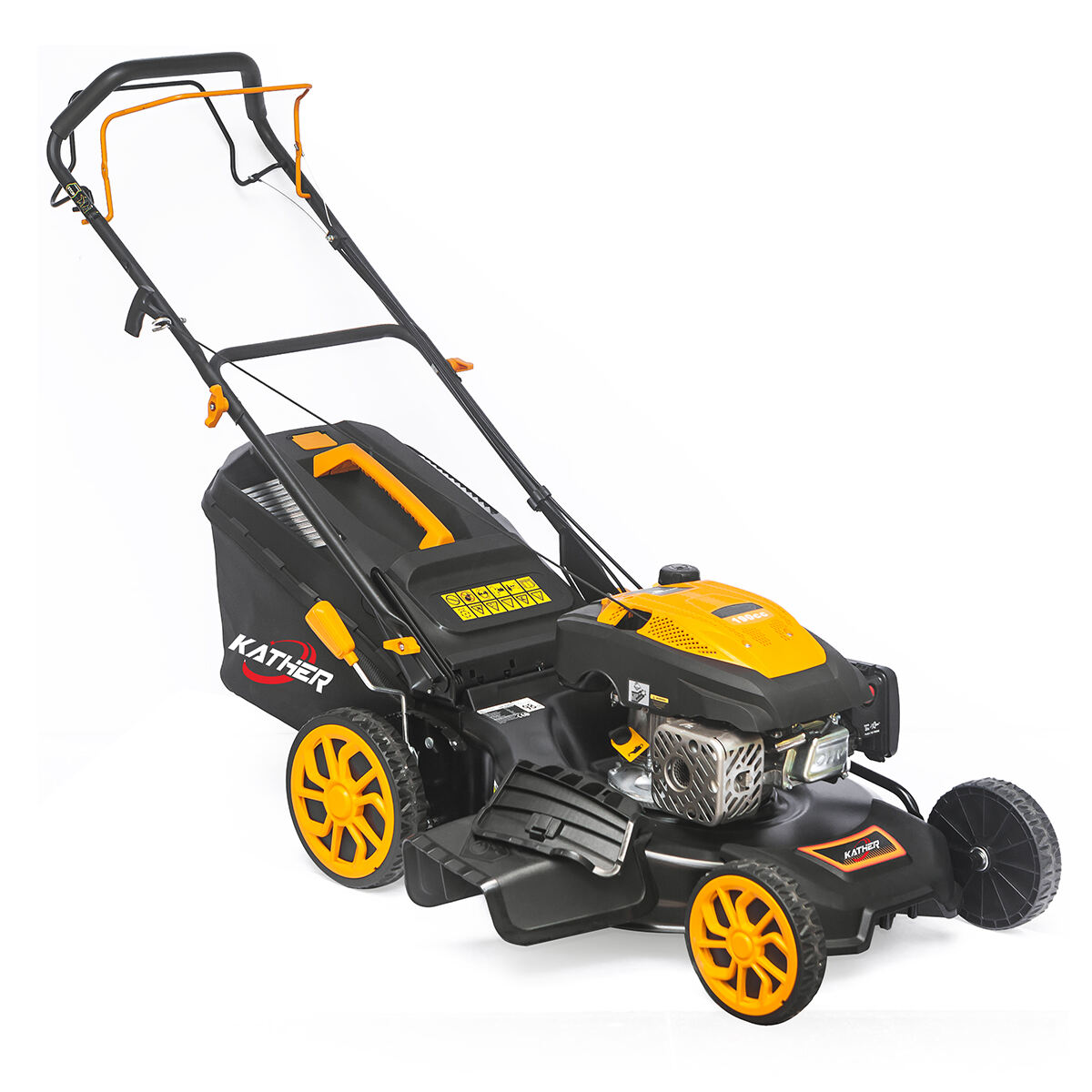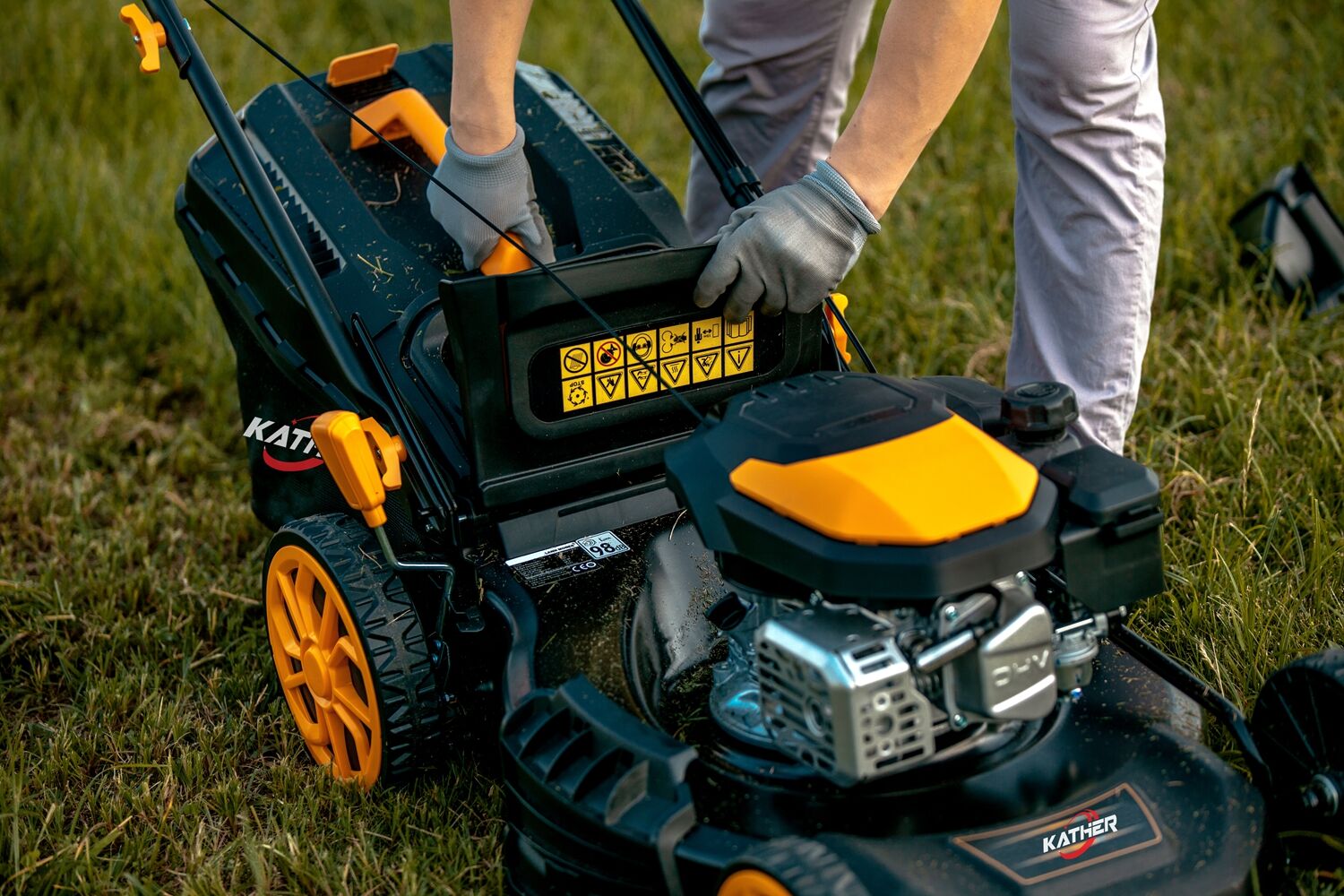Slopes & Obstacles: Programming Remote Control Lawn Mower GPS Routes
The evolution of landscaping technology has introduced a new era of convenience and precision. Among the innovations, the remote control Lawn Mower with GPS guidance has become a game-changer for homeowners, landscapers, and commercial property managers. These machines are not only efficient but also capable of handling challenging terrains with slopes and obstacles that once required manual effort.
Programming a remote control Lawn Mower to navigate slopes, trees, garden furniture, and irregular yard layouts requires a thoughtful understanding of GPS technology, mower design, and safety practices. This article explores how remote control Lawn Mowers use GPS to navigate, the challenges posed by slopes and obstacles, and strategies to program efficient mowing routes for both residential and commercial applications.
The Rise of Remote Control Lawn Mowers
The traditional push Lawn Mower has been a staple of lawn care for decades, but modern lifestyles demand more convenience and efficiency. Remote control Lawn Mowers address these needs by allowing users to operate the machine from a distance. Advanced models integrate GPS navigation, enabling automated mowing with minimal human intervention.
These Lawn Mowers are particularly appealing to:
Homeowners seeking convenience.
Landscaping businesses that manage large properties.
Municipalities maintaining parks and public spaces.
Businesses that want consistent and professional-looking grounds.
By combining remote control functionality with GPS programming, these Lawn Mowers significantly reduce labor while improving precision and coverage.
How GPS Integration Works in Lawn Mowers
GPS technology enables a Lawn Mower to map, track, and follow designated routes. The system relies on satellite signals to determine the mower’s position in real time. Depending on the model, the mower can operate in one of two modes:
Manual Programming: The user sets up boundaries and mowing routes using a mobile app or remote control.
Automated Mapping: The Lawn Mower creates its own map by driving around the perimeter of the yard, recording GPS coordinates, and generating an efficient mowing plan.
GPS systems allow the Lawn Mower to avoid overlapping paths, reduce missed areas, and navigate obstacles more effectively.
Slopes: The Challenge of Inclined Terrain
Sloped lawns present unique challenges for Lawn Mowers. Without proper planning, these areas can result in uneven mowing, safety hazards, and machine strain.
Key Considerations for Slopes
Gradient Limitations: Most remote control Lawn Mowers are rated for specific slope percentages, often around 20–35 degrees. Exceeding these limits can lead to instability or mechanical strain.
Traction: Wheels or tracks with strong grip are essential to maintain balance and prevent slipping.
Battery Usage: Operating on inclines requires more power, reducing overall mowing time per charge.
Route Planning: Mowing across slopes (horizontally) is generally safer than mowing straight up and down, which risks tipping.
By programming GPS routes that account for slope angles and mower capabilities, users ensure consistent and safe operation.

Obstacles: Navigating Complex Yards
Modern landscapes often include trees, shrubs, flower beds, and decorative features that present obstacles for a Lawn Mower. Furniture, pathways, and children’s play equipment also complicate mowing routes.
GPS Solutions for Obstacles
Virtual Boundaries: Many Lawn Mowers allow users to set no-go zones through GPS apps, preventing the mower from entering sensitive areas.
Sensors: Some models combine GPS with ultrasonic or infrared sensors to detect unexpected obstacles in real time.
Dynamic Re-Routing: Advanced systems can adjust mowing routes instantly when new obstacles are detected, avoiding damage to property and the machine.
Obstacle management is critical for ensuring efficiency and safety when using a Lawn Mower in complex yards.
Programming GPS Routes Effectively
Creating efficient mowing routes with GPS requires careful setup and consideration of terrain, obstacles, and mowing goals.
Step 1: Mapping the Perimeter
Walk the Lawn Mower or guide it around the edges of the lawn using remote control. The GPS records boundary coordinates to create a virtual fence.
Step 2: Defining No-Go Zones
Use the app or control system to mark obstacles, such as garden beds, trees, or pools. This prevents accidental entry into sensitive areas.
Step 3: Setting the Mowing Pattern
Choose between straight lines, spiral patterns, or random mowing depending on yard layout and mower capabilities. Straight-line mowing is most efficient for rectangular lawns, while spiral patterns suit circular or irregular spaces.
Step 4: Optimizing for Slopes
For sloped areas, program routes that cut across the incline rather than up and down. This reduces mower strain and improves safety.
Step 5: Adjusting for Efficiency
Minimize overlap between passes by fine-tuning GPS settings. Efficient routes reduce energy use and maximize battery life.
Step 6: Testing and Monitoring
After initial programming, monitor the Lawn Mower during its first runs to identify adjustments needed for obstacles, slope handling, or boundary precision.
Safety Considerations for Slopes and Obstacles
While GPS greatly improves navigation, safety remains a priority when operating a remote control Lawn Mower.
Always ensure slopes are within the mower’s rated capacity.
Keep children and pets away during operation.
Regularly inspect blades, wheels, and sensors for wear.
Monitor battery levels, as operating on slopes drains power more quickly.
Use fail-safe features like emergency stop buttons or remote override functions.
Benefits of Remote Control Lawn Mowers with GPS
Time Savings
Automated route planning reduces manual mowing time, freeing users for other tasks.
Precision and Consistency
GPS ensures even coverage with minimal overlap, producing professional-quality results.
Reduced Labor Costs
For landscaping businesses and municipalities, fewer workers are needed to maintain large areas.
Adaptability
From small residential yards to large commercial landscapes, Lawn Mowers with GPS adapt to a variety of environments.
Environmental Benefits
Electric models produce lower emissions and noise compared to gas-powered Lawn Mowers, contributing to eco-friendly landscaping.
Common Issues and Troubleshooting
Despite their advantages, Lawn Mowers with GPS may encounter issues:
Weak GPS Signal: Trees or tall buildings can interfere with signals. Solutions include repositioning the base station or choosing hybrid GPS-sensor models.
Battery Drain: Running on slopes consumes more energy. Users may need spare batteries or higher-capacity models.
Software Bugs: Firmware updates are important to maintain GPS accuracy and obstacle detection.
Weather Impact: Wet grass can affect traction and mowing quality. It’s best to schedule mowing during dry conditions.
By understanding these issues, users can maximize performance and longevity of their Lawn Mowers.
The Future of GPS Lawn Mower Technology
As technology evolves, the capabilities of Lawn Mowers with GPS will continue to expand. Future trends include:
AI Integration: Machine learning will improve route optimization and obstacle avoidance.
Solar Charging: Mowers may recharge through solar panels, extending runtime.
Smart Home Integration: Linking Lawn Mowers to smart home systems for voice commands and remote monitoring.
Enhanced Safety Features: Advanced sensors and cameras for real-time hazard detection.
Fleet Management: For commercial landscaping, multiple Lawn Mowers could be coordinated simultaneously.
These advancements promise even greater efficiency, safety, and convenience.
Conclusion
Programming GPS routes for remote control Lawn Mowers has transformed lawn care into a precise, efficient, and user-friendly task. By addressing the challenges of slopes and obstacles through thoughtful programming and advanced technology, these machines deliver consistent results in residential, commercial, and municipal settings.
The advantages of GPS-guided Lawn Mowers—time savings, safety, adaptability, and environmental benefits—make them an essential tool for modern landscaping. As innovation continues, these machines will only become smarter, more efficient, and more accessible, ensuring that lawns everywhere are maintained with precision and ease.
FAQ
Can a remote control Lawn Mower handle steep slopes?
Yes, but only within the limits specified by the manufacturer. Most models are rated for slopes of 20–35 degrees.
How does a Lawn Mower avoid obstacles?
Through a combination of GPS mapping, virtual boundaries, and sensors such as ultrasonic or infrared detectors.
Do Lawn Mowers with GPS require internet access?
No, GPS operates independently of internet access, though some models use apps that may require connectivity for advanced features.
Are Lawn Mowers with GPS eco-friendly?
Yes, most are electric-powered, producing less noise and fewer emissions than gas-powered alternatives.
What happens if the GPS signal is weak?
The Lawn Mower may lose accuracy. Hybrid systems with additional sensors or repositioning of the base station can solve this problem.
Table of Contents
- Slopes & Obstacles: Programming Remote Control Lawn Mower GPS Routes
- The Rise of Remote Control Lawn Mowers
- How GPS Integration Works in Lawn Mowers
- Slopes: The Challenge of Inclined Terrain
- Obstacles: Navigating Complex Yards
- Programming GPS Routes Effectively
- Safety Considerations for Slopes and Obstacles
- Benefits of Remote Control Lawn Mowers with GPS
- Common Issues and Troubleshooting
- The Future of GPS Lawn Mower Technology
- Conclusion
- FAQ








